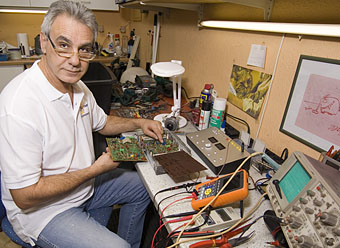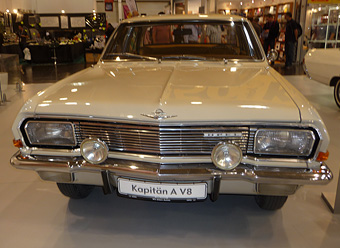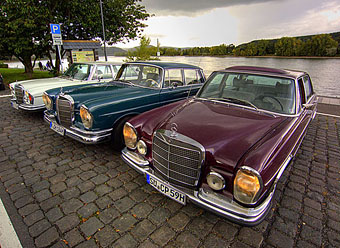D-Jetronik
D-Jetronik, what is it exactly?
The D-Jetronik is a pressure sensor controlled engine management. That means it works with the vacuum, which is generated in the motor.
One of the most important components of a D-Jetronic system is the manifold pressure sensor or MAP sensor, which is installed perpendicular to the direction of travel, usually under the windscreen [windshield] in the engine compartment of the vehicle. The reading from the MAP sensor is sent to the analog controller which uses this along with other measurements such as ambient air temperature, motor temperature and engine rpm to determine the fuel injection intervals and the amount of fuel injected.
Below the distributor sit the trip trigger points on a unit which resembles a set of human dentures and are driven by a shaft and are opened faster or slower depending on the speed of the engine. In an eight-cylinder engine there are four contacts, which face each other in pairs on two levels. Each of these contacts activates via the controller, two injection valves simultaneously.
In the D-Jetronik there is a manifold injection system.
The analog controller is in effect the brain of the system. It is housed in a very inconspicuous metal sleeve and is comprised of two circuit boards which are arranged one above the other. Both boards are filled with small components.
The upper plate is designated as a the secondary circuit board. It is precisely matched to the engine, which is installed in the vehicle and via the the various external sensors controls the specific moment and intervals of the fuel injection injector valves. To this end, highly accurate electrical resistors which are specificially attuned to each other have been installed. Experts speak here of the implementation of the volumetric characteristic field.
The lower board is referred to as the main or mother board. It houses the complete control electronics and power amplifier technology for the fuel injectors, among other things, but also the control electronics for the fuel pump relay (KPR) and is largely kept the same for all vehicles.
In some vehicles, it was often located in near the right front fender and in other vehicles below the glove compartment.
When the term "D-Jetronic" is mentioned, virtually all seasoned car mechanic turn pale. Even old hands do not really have the courage to attempt it and there is scarcely anyone you might be able to ask for advice. The "expertise" of many users who are active in various classic car forums is amazing. "Pull on the cable, wiggle the hose, simply replace this or that;, that also helped me". This and similar advice each of us knows, but usually it doesn’t help at all.
Fact is the D-Jetronic is not difficult to understand. You only have to mess around with it and systematically and logically proceed with troubleshooting.
D-Jetronik, which manufacturers built them?
The D-Jetronic was installed in 1967 for the first time in a vehicle. It was the VW 1600 LE / TLE type three,
Mercedes, Opel, Citroén, Volvo, Saab succeeded them and installed the D-Jetronic beginning in 1969 in certain vehicles. In the early ‘70s of last century, it was also installed by Renault, BMW and Lancia in various vehicles. The company Lucas produced the unit for the Jaguar XJ-S models and the XJ Series II beginning in 1975, fit it to the twelve-cylinder engines of these vehicles.
Impressions





